Mitochondrial Disease Therapies Market Segments, Growth, and Trends by 2031
Historic Data: 2021-2023 | Base Year: 2024 | Forecast Period: 2025-2031Coverage: Mitochondrial Disease Therapies Market covers analysis by Therapy Type (Dietary Therapy, Vitamin and Supplement Therapy, Pipeline Therapies); Distribution Channel (Hospital Pharmacies, Retail Pharmacies, Online Pharmacies), and Geography (North America, Europe, Asia Pacific, and South and Central America)
- Report Date : Feb 2026
- Report Code : TIPRE00008495
- Category : Life Sciences
- Status : Upcoming
- Available Report Formats :


- No. of Pages : 150
The Mitochondrial Disease Therapies Market is expected to register a CAGR of 8.3% from 2025 to 2031, with a market size expanding from US$ XX million in 2024 to US$ XX Million by 2031.
The report is segmented by Therapy Type (Dietary Therapy, Vitamin and Supplement Therapy, Pipeline Therapies); and Distribution Channel (Hospital Pharmacies, Retail Pharmacies, Online Pharmacies). The global analysis is broken down at the regional level and for major countries. The market evaluation is presented in US$ for the above segmental analysis.
Purpose of the Report
The report Mitochondrial Disease Therapies Market by The Insight Partners aims to describe the present landscape and future growth, top driving factors, challenges, and opportunities. This will provide insights to various business stakeholders, such as:
- Technology Providers/Manufacturers: To understand the evolving market dynamics and know the potential growth opportunities, enabling them to make informed strategic decisions.
- Investors: To conduct a comprehensive trend analysis regarding the market growth rate, market financial projections, and opportunities that exist across the value chain.
- Regulatory bodies: To regulate policies and police activities in the market with the aim of minimizing abuse, preserving investor trust and confidence, and upholding the integrity and stability of the market.
Mitochondrial Disease Therapies Market Segmentation
Therapy Type
- Dietary Therapy
- Vitamin and Supplement Therapy
- Pipeline Therapies
Distribution Channel
- Hospital Pharmacies
- Retail Pharmacies
- Online Pharmacies
You will get customization on any report - free of charge - including parts of this report, or country-level analysis, Excel Data pack, as well as avail great offers and discounts for start-ups & universities
Mitochondrial Disease Therapies Market: Strategic Insights
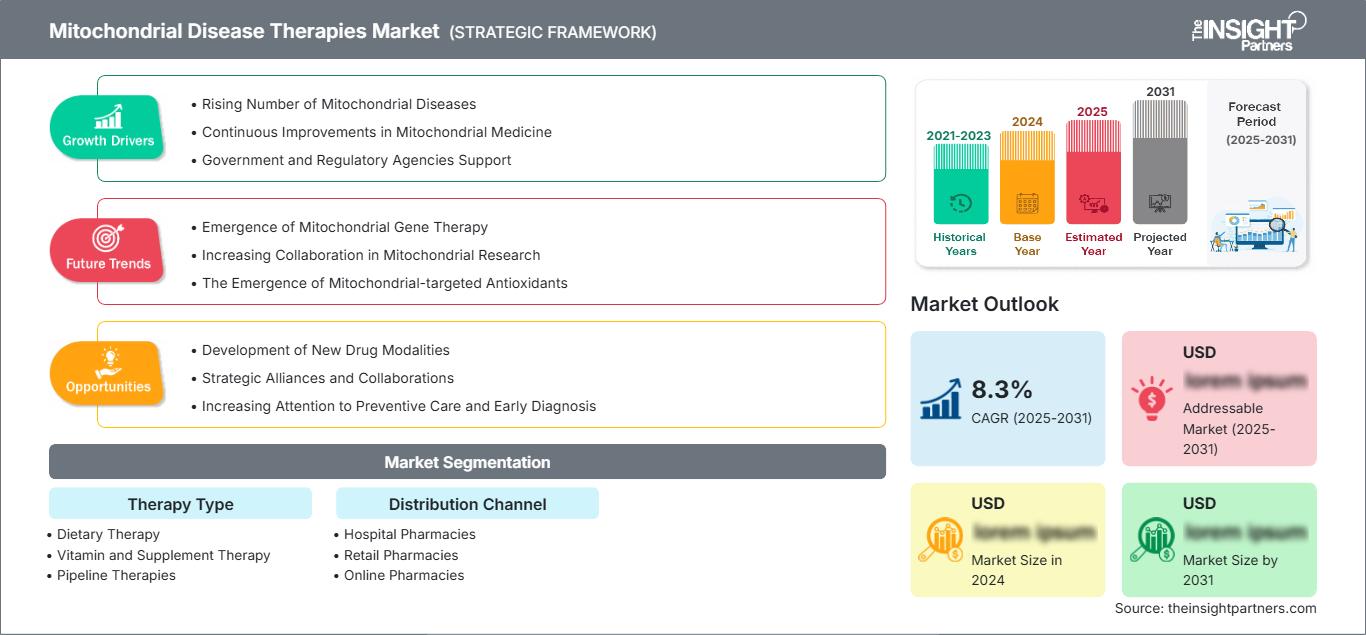
-
Get Top Key Market Trends of this report.This FREE sample will include data analysis, ranging from market trends to estimates and forecasts.
Mitochondrial Disease Therapies Market Growth Drivers
- Rising Number of Mitochondrial Diseases: The rising number of mitochondrial diseases is the growth factor for the mitochondrial disease therapies market. These conditions, which are caused by malfunctions of the mitochondria, and energy factories in cells, are coming into their own with more genetic and clinical research. Viruses like Leber’s hereditary optic neuropathy (LHON), MELAS (mitochondrial encephalomyopathy, lactic acidosis, and stroke-like attacks) and Kearns-Sayre syndrome (KSS) are all being diagnosed, and the public and doctors are becoming more aware of mitochondrial disease. But with better genetic testing and diagnosis, more people are now diagnosed with these once-undetected conditions. The more patients are diagnosed, the greater the need for curative cures. Additionally, mitochondrial-dependent genetic mutations have been implicated in numerous neurodegenerative conditions that are resurging efforts at mitochondrially targeted therapies. The market size of therapies for mitochondrial diseases is predicted to grow rapidly as the prevalence and diagnostic instruments become better, resulting in demand for therapies. Furthermore, as the patient population can be identified more precisely via genetic analysis, drug companies will pay more for treatments of mitochondrial diseases, and these will gain market share across the world.
- Continuous Improvements in Mitochondrial Medicine: The progress in mitochondrial medicine is another key growth driver of the mitochondrial disease therapies market. In the last couple of decades, research on dysfunction in mitochondria has been really phenomenal, and new therapies continue to be emerging to treat causes of these disorders. There also are new technologies; gene therapy and mitochondrial transplantation plus targeted drug delivery, which work well in laboratories. These innovations could make for better, more tailored therapies for mitochondrial pathologies that are more efficient and effective – for patients and for therapies. Second, mitochondrial-targeted antioxidants and nucleotide treatments are being developed to counteract oxidative damage and rejuvenate mitochondria. Improved genetic treatments will presumably revolutionize the treatment of mitochondrial disease, offering tailored treatments for individual genetic mutations causing the disease. There is also gene editing, like CRISPR/Cas9, which can look at correcting the defects in mitochondrial DNA that could be of long help in curing such chronic diseases. Research will continue to add promising treatments, and the market for mitochondrial disease therapies will expand. That is the drive for improvement as this pushes market growth in the long run.
- Government and Regulatory Agencies Support: Government and regulatory authorities are instrumental in the mitochondrial disease therapies market growth. With a growing knowledge of mitochondrial diseases, governments, and health agencies alike are realizing that better treatments are needed. The FDA and EMA have already sped up orphan drug approval, which is great news for rare diseases such as mitochondrial disorders. Orphan drug designations aim to give tax breaks, market exclusivity, and fee waivers to support the research for therapies for rare diseases. By making the therapeutics for mitochondrial diseases much easier to get to market, the FDA’s Orphan Drug Act has allowed companies to innovate and get treatments to patients much sooner. Then there is the funding of mitochondrial disease research, which is also growing in governments around the world. That funding is allowing scientists to investigate the ew therapeutic potential and ramp up clinical trials for new treatments. Regulatory & financial boosts for the treatment of mitochondrial diseases are sure to drive the growth of the market as it will establish the infrastructure and funding needed to further develop therapies for mitochondrial diseases. With increasing public and private investment, the market for therapies for mitochondrial disease will only increase.
Mitochondrial Disease Therapies Market Future Trends
- Emergence of Mitochondrial Gene Therapy: Probably the most promising future development in the mitochondrial disease therapies industry is mitochondrial gene therapy. But whereas there have been no cures for the mitochondrial disease other than symptoms, with gene therapy there might be better ones to come. Gene therapy aims directly to repair mitochondrial DNA (mtDNA) mutations that underlie many mitochondrial disorders. CRISPR/Cas9-based gene-editing technology is beginning to help us cure the mitochondrial-based disease since defective genes can be edited so that they do exactly the right thing. Then there is mitochondrial transplantation, or mitochondrial replacement therapy, as a way of addressing mitochondrial disease, allowing patients to bring their mitochondria back online. These new methods might alter treatments, from the relief of symptoms to reversible ones. The market for therapies for mitochondrial diseases will only increase with advances in gene therapy and mitochondrial repair research. Those companies that create effective gene therapies could change how mitochondrial diseases are treated, and this market would see huge opportunities.
- Increasing Collaboration in Mitochondrial Research: The other major trend impacting the mitochondrial disease therapies market is inter-industry collaboration among biotech firms, universities, and government entities. Mitochondrial disease rarely occurs; thus collaboration in research is vital to making effective treatments hit the road. These pharmaceutical companies, academic research labs, s, and non-profit organizations come together to have a more united model of studying mitochondrial dysregulation and finding new treatments. They collaborate to share resources, knowledge, and findings to discover effective treatments faster. Besides, there is also an increase in clinical trial networks in assisting the large-scale recruitment of patients and fast approval of regulators. Such a collaborative culture is likely to drive market expansion and facilitate faster developments in the treatment of mitochondrial disease. In other words, such an active research landscape in mitochondrial disease will be associated with a bigger market for new treatments that bring innovation and better results.
- The Emergence of Mitochondrial-targeted Antioxidants: The second exciting development in the mitochondrial disease therapies space is the launch of mitochondrial-targeted antioxidants. Oxidative stress from free radical buildup is a major cause of mitochondrial dysfunction. To specifically attack and shield mitochondria from oxidative stress, mitochondrial-specific antioxidants are formed. Such antioxidants can stop mitochondria from degenerating which is vital to halting the development of mitochondrial disease. Other newly discovered mitochondrial-targeted antioxidant therapies have a good promise in diseases like Leber's hereditary optic neuropathy (LHON) and MELAS. These treatments will improve the quality of life in patients and postpone the onset of disease through maintenance of mitochondrial function and minimization of oxidative stress. With time, more research into this topic, these treatments will capture the market and open wide doors for pharmaceutical companies. As mitochondrial antioxidants continue to increase in use as a therapy, the market for therapies targeting mitochondrial disorders will continue to grow.
Mitochondrial Disease Therapies Market Opportunities
- Development of New Drug Modalities: New drug modalities like gene therapy, cell therapy and mitochondrially targeted drugs are another growth potential in the mitochondrial disease therapies market. Most of the treatments for mitochondrial diseases are symptomatic and treat symptoms rather than causes. However, the use of gene-editing technologies (CRISPR/Cas9, for example) now promises therapeutic approaches to mitochondrial diseases. There have been some genetic treatments fixing mitochondrial DNA mutations or improving the functioning of mitochondria under clinical trials. Antioxidants from the source of mitochondria have been a fad for some of the newer therapies developed in conditions like LHON and MELAS. When pharmaceutical companies discover newer treatment drugs, they can sell these newer therapies to increase market size while patients expand choices. As cell-based therapies advance and as personalized medicine continues to be developed based on the genetic mutations of individual patients, the market for mitochondrial disease therapies will grow in size. They will set the stage for a new kind of treatment for mitochondrial disease, and promise to give hope to previously untreatable patients.
- Strategic Alliances and Collaborations: Strategic alliances and collaborations between biotechnology companies, universities, and medical societies are one of the fastest-growing segments in the mitochondrial disease therapies market. With mitochondrial disease being complex and the R&D expensive, it’s easier for companies to partner up and pool their resources. Co-operation with universities’ research institutes could lead to novel biomarkers, genetic mutations, and therapeutic targets for mitochondrial diseases. Together, these actors can push for novel treatments for mitochondrial disease more rapidly. Furthermore, collaborations with drug companies can expedite the time it takes to move research findings to clinical trials and release new treatments. The more players that come to market and collaborate, the larger the market for mitochondrial disease treatments, better treatment will be available for patients and faster technologies will be rolled out. Govt agencies and rare disease-focused non-profits can also be helpful, offering funding, grants, and regulatory incentives for collaborations. These alliances will drive growth by creating a collaboration culture that fosters innovation and shortens the time-to-market for novel therapies.
- Increasing Attention to Preventive Care and Early Diagnosis: Increasing attention to preventive care and early diagnosis is another lucrative growth driver for the mitochondrial disease therapies market. Increasingly, however, through the use of genetic testing and screening, mitochondrial diseases are recognized in an early stage before symptoms appear. Achieving diagnosis early is essential for addressing mitochondrial disease because this enables the delivery of treatments that delay disease development and help patients live longer. With more hospitals investing in genetic diagnosis and preventive care globally, more patients will be diagnosed, and there will be more patients for mitochondrial disease therapies to treat. Moreover, diagnosis can be made early, and personalized treatments can be devised, particularly in the case of mitochondrial diseases, since there are many possible mutations involved. Such preventive care will stimulate demand for mitochondrial disease treatments that in turn will boost the market size and market share for manufacturers of diagnostic and therapeutic devices. As the international healthcare system gets more engaged in treating rare and genetic disorders, the market for mitochondrial disease therapies is going to grow.
Mitochondrial Disease Therapies Market Regional Insights
The regional trends and factors influencing the Mitochondrial Disease Therapies Market throughout the forecast period have been thoroughly explained by the analysts at The Insight Partners. This section also discusses Mitochondrial Disease Therapies Market segments and geography across North America, Europe, Asia Pacific, Middle East and Africa, and South and Central America.
Mitochondrial Disease Therapies Market Report Scope
| Report Attribute | Details |
|---|---|
| Market size in 2024 | US$ XX million |
| Market Size by 2031 | US$ XX Million |
| Global CAGR (2025 - 2031) | 8.3% |
| Historical Data | 2021-2023 |
| Forecast period | 2025-2031 |
| Segments Covered |
By Therapy Type
|
| Regions and Countries Covered |
North America
|
| Market leaders and key company profiles |
|
Mitochondrial Disease Therapies Market Players Density: Understanding Its Impact on Business Dynamics
The Mitochondrial Disease Therapies Market is growing rapidly, driven by increasing end-user demand due to factors such as evolving consumer preferences, technological advancements, and greater awareness of the product's benefits. As demand rises, businesses are expanding their offerings, innovating to meet consumer needs, and capitalizing on emerging trends, which further fuels market growth.
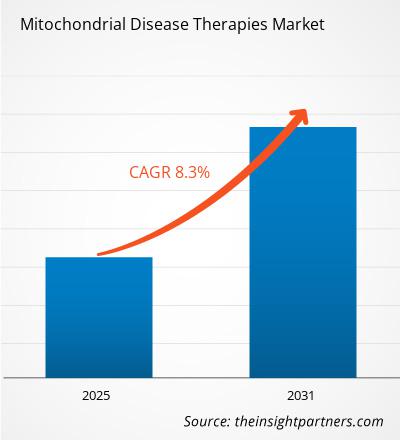
- Get the Mitochondrial Disease Therapies Market top key players overview
Key Selling Points
- Comprehensive Coverage: The report comprehensively covers the analysis of products, services, types, and end users of the Mitochondrial Disease Therapies Market, providing a holistic landscape.
- Expert Analysis: The report is compiled based on the in-depth understanding of industry experts and analysts.
- Up-to-date Information: The report assures business relevance due to its coverage of recent information and data trends.
- Customization Options: This report can be customized to cater to specific client requirements and suit the business strategies aptly.
The research report on the Mitochondrial Disease Therapies Market can, therefore, help spearhead the trail of decoding and understanding the industry scenario and growth prospects. Although there can be a few valid concerns, the overall benefits of this report tend to outweigh the disadvantages.
Frequently Asked Questions
What is the expected CAGR of the Mitochondrial Disease Therapies Market?
What are the driving factors impacting the Mitochondrial Disease Therapies Market?
What are the future trends of the Mitochondrial Disease Therapies Market?
Which are the leading players in the Mitochondrial Disease Therapies Market?
What are the deliverable formats of the Mitochondrial Disease Therapies Market report?
What are the options available for the customization of this report?
Mrinal is a seasoned research analyst with over 8 years of experience in Life Sciences Market Intelligence and Consulting. With a strategic mindset and unwavering commitment to excellence, she has built deep expertise in pharmaceutical forecasting, market opportunity assessment, and developing industry benchmarks. Her work is anchored in delivering actionable insights that empower clients to make informed strategic decisions.
Mrinal’s core strength lies in translating complex quantitative datasets into meaningful business intelligence. Her analytical acumen is instrumental in shaping go-to-market (GTM) strategies and uncovering growth opportunities across the pharmaceutical and medical device sectors. As a trusted consultant, she consistently focuses on streamlining workflow processes and establishing best practices, thereby driving innovation and operational efficiency for her clients.
- Historical Analysis (2 Years), Base Year, Forecast (7 Years) with CAGR
- PEST and SWOT Analysis
- Market Size Value / Volume - Global, Regional, Country
- Industry and Competitive Landscape
- Excel Dataset
Testimonials
The Insight Partners' SCADA System Market report is comprehensive, with valuable insights on current trends and future forecasts. The team was highly professional, responsive, and supportive throughout. We are very satisfied and highly recommend their services.
RAN KEDEM Partner, Reali Technologies LTDsI requested a report on a very specific software market and the team produced the report in a few days. The information was very relevant and well presented. I then requested some changes and additions to the report. The team was again very responsive and I got the final report in less than a week.
JEAN-HERVE JENN Chairman, Future AnalyticaWe worked with The Insight Partners for an important market study and forecast. They gave us clear insights into opportunities and risks, which helped shape our plans. Their research was easy to use and based on solid data. It helped us make smart, confident decisions. We highly recommend them.
PIYUSH NAGPAL Sr. Vice President, High Beam GlobalThe Insight Partners delivered insightful, well-structured market research with strong domain expertise. Their team was professional and responsive throughout. The user-friendly website made accessing industry reports seamless. We highly recommend them for reliable, high-quality research services
YUKIHIKO ADACHI CEO, Deep Blue, LLC.This is the first time I have purchased a market report from The Insight Partners.While I was unsure at first, I visited their web site and felt more comfortable to take the risk and purchase a market report.I am completely satisfied with the quality of the report and customer service. I had several questions and comments with the initial report, but after a couple of dialogs over email with their analyst I believe I have a report that I can use as input to our strategic planning process.Thank you so much for taking the extra time and making this a positive experience.I will definitely recommend your service to others and you will be my first call when we need further market data.
JOHN SUZUKI President and Chief Executive Officer, Board Director, BK TechnologiesI wish to appreciate your support and the professionalism you displayed in the course of attending to my request for information regarding to infectious disease IVD market in Nigeria. I appreciate your patience, your guidance, and the fact that you were willing to offer a discount, which eventually made it possible for us to close a deal. I look forward to engaging The Insight Partners in the future, all thanks to the impression you have created in me as a result of this first encounter.
DR CHIJIOKE ONYIA MANAGING DIRECTOR, PineCrest Healthcare Ltd.Reason to Buy
- Informed Decision-Making
- Understanding Market Dynamics
- Competitive Analysis
- Identifying Emerging Markets
- Customer Insights
- Market Forecasts
- Risk Mitigation
- Boosting Operational Efficiency
- Strategic Planning
- Investment Justification
- Tracking Industry Innovations
- Aligning with Regulatory Trends












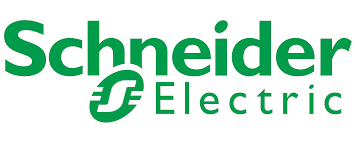


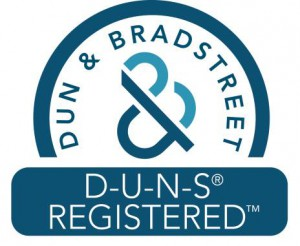
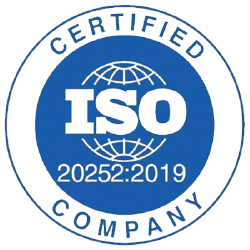



 Get Free Sample For
Get Free Sample For